Should You Use a Water Flosser?
Technology continues to improve every part of our lives, even how we clean our teeth. Thanks to recent innovations, you can now clean your pearly whites with a water flosser!
You might have seen one at a nearby store or an online marketplace, but you may not have known how it works. Fortunately, this article will explain water flossers so you can see whether or not they are worth a try.
We will start by discussing how this dental hygiene device works and its pros and cons. Moreover, we will also talk about traditional flossing and compare it to water flossing.
What is a water flosser?
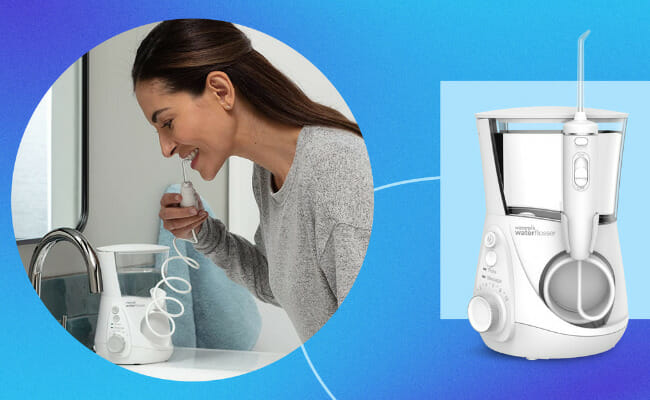
Photo Credit: www.nbcnews.com
A water flosser is a device that shoots a thin stream of water. You aim it in between your teeth to remove stuck particles. Consequently, it works like a traditional floss thread.
Also, some people call it a water pick or an oral irrigator. Both can improve your daily oral care routine but have unique pros and cons.
Benefits of water flossing

Photo Credit: www.colgate.com
You can aim a water floss nozzle freely inside your mouth to wash hard-to-reach areas. Meanwhile, traditional floss can be awkward to use at the back of your mouth.
A water floss machine can provide various options for pulse, speed, pressure, or cast of the water. You could reduce the power of the water stream hurts your gums.
You can share it among family members because the nozzle does not touch your mouth. As a result, everyone at home can have cleaner and whiter teeth with only one device.
That includes people with disabilities like Parkinson’s, arthritis, and epilepsy. They may struggle to steady their hands long enough to use ordinary floss. Meanwhile, they might find water floss machines easier to use.
Some people with gum disease may prefer water flossing because it is less likely to damage your gums. Also, it may help them avoid the pain they usually feel with traditional floss.
Other folks experience dry mouth due to genetics, medicines, and other factors. A water flosser could add moisture to their mouths and eliminate plaque.
You might also prefer water flossing if you have braces or other dental devices on your teeth. It can be awkward to thread ordinary floss between your teeth and away from fixtures.
Issues of water flossing
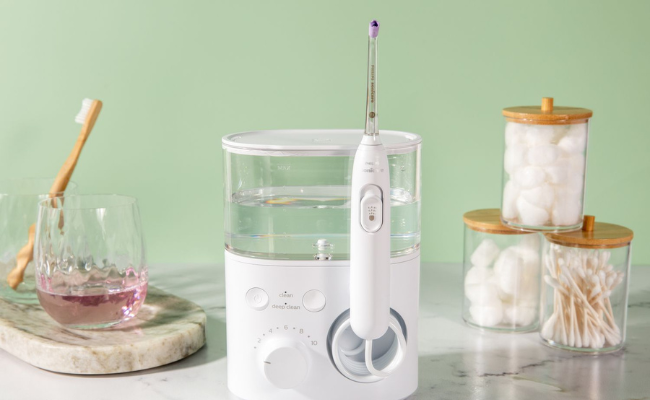
Photo Credit: www.verywellhealth.com
One hurdle you may face when choosing a water flosser is the price. At the time of writing, they cost roughly $30 to $110. On the other hand, regular floss is significantly cheaper.
Depending on your machine, you might be unable to remove all the gunk in your teeth. However, choosing the best water flosser can ensure a thorough clean.
A quality machine could prevent a messy flossing session because you have more control over the water stream. Meanwhile, you might have trouble with a cheap one because it only uses one level of water pressure.
Water flossers also require an electricity and water connection, which may increase your monthly bills. People may have second thoughts about getting one, especially those who need to save money on groceries.
Types of water floss
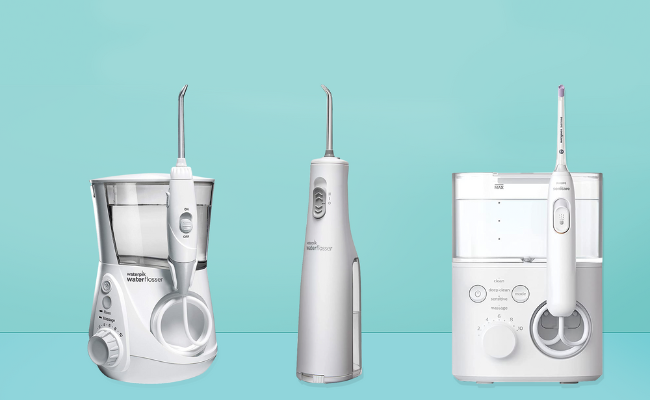
Photo Credit: www.goodhousekeeping.com
The best water flosser could minimize its water and power consumption to help you save money. That is why you need to know the various types available.
Countertop water flossers are the heaviest among the four types. You prop it on your countertop and plug it into a nearby power outlet. Also, you will have to refill its water tank whenever it is empty.
Battery-operated or cordless water flossers are the most flexible types. They are perfect for travelers because you can bring them anywhere. However, they usually lack the power of countertop flossers.
Shower flossers attach to your shower head. They do not require electricity or batteries, and you do not need to refill the device. However, you may find them more challenging to control than the other types.
Faucet flossers connect to your sink instead of your shower, but they also have issues with maneuverability. You may feel confused when controlling the faucet pressure and flosser settings.
How to use a water flosser
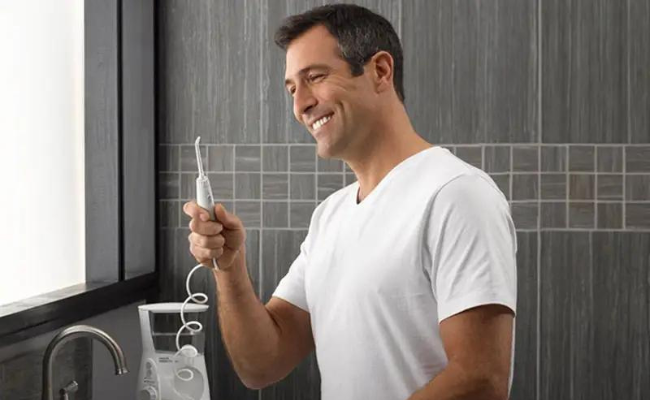
Photo Credit: www.businessinsider.in
A water flosser may seem intimidating initially, but it can be simpler to use than traditional floss. Start by filling its tank with water.
Then, attach the flosser tip to the handle. Since it connects to your water pipes, you can skip this step if you have a shower or faucet flosser.
Place the tip into your mouth and start with the back teeth, Next, lean over your sink and switch on the device.
Adjust the setting to ensure comfort for your gums. It should be strong enough to remove gunk but soft enough to avoid hurting your mouth.
Trace your gum line from the rear teeth to the front on each side. Also, make sure to pause a second or two between the teeth. Remove the tip and let the air out if the tank is empty.
Water flossing vs. traditional flossing
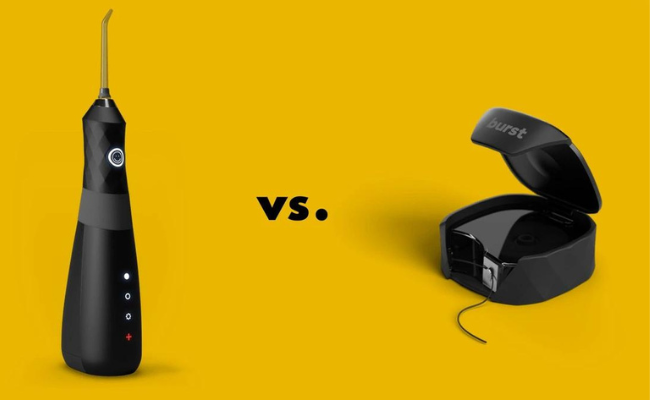
Photo Credit: www.teethtalkgirl.com
According to the Journal of Clinical Dentistry, water flossers can provide a 74.4% reduction in plaque, while string floss offers 57.7%. Also, they could decrease the risk of bleeding gums and gingivitis.
It is particularly more effective at removing stuff from the gum line. As mentioned earlier, more people find it easier to use water flossers than string floss.
You do not need to put your hands in your mouth, so they are great for people with disabilities. On the other hand, string floss still has its advantages.
It is effective in removing plaque and food between your teeth. Meanwhile, a water flosser cannot reach these areas.
Benefits of regular flossing
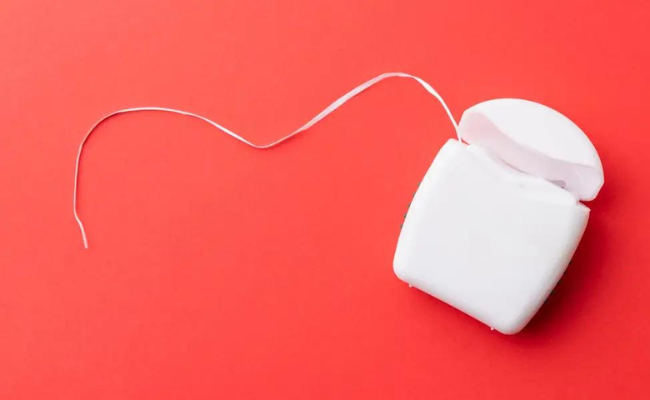
Photo Credit: www.insider.com
Dental floss has been around since the 1800s. It started from a recommendation from a dentist named Levi Spear Parmly in his 1819 book, “A Practical Guide to the Management of the Teeth.”
Asahel M. Shurtleff patented the product 55 years later. His design used unwaxed silk and had packaging with a built-in cutter, similar to modern floss kits. However, it did not become popular until the end of the Second World War, when nylon replaced silk.
As a result, modern string floss became more affordable. Moreover, you can buy floss in various forms and flavors. For example, you may choose dental picks if the long threads cut your fingers.
You can find them easily at local stores and pharmacies like CVS or Walgreens. Consequently, you may purchase them easier than water flossers.
As mentioned, the best water flosser can cost you hundreds of dollars. Meanwhile, you can buy a quality spool of dental floss at a significantly lower cost.
Issues with regular flossing
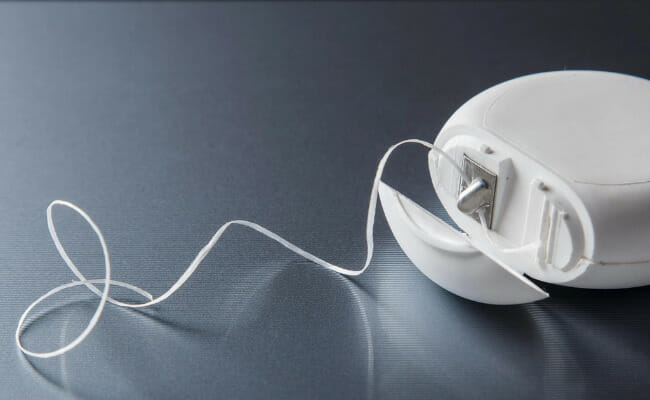
Photo Credit: www.readersdigest.ca
People put dental floss between teeth and gently pull from side to side. The motion removes food, plaque, and other stuff stuck in these crevices. This method is simple for most people but not those with specific conditions.
For example, arthritis could prevent you from stretching your fingers enough to position dental floss. Also, epilepsy and Parkinson’s disease make your hands fidgety.
String floss could hurt if you have sensitive gums. Pull the thread too harshly, and you could cause them to bleed. Those who have such conditions may require the best water flosser.
Types of traditional floss
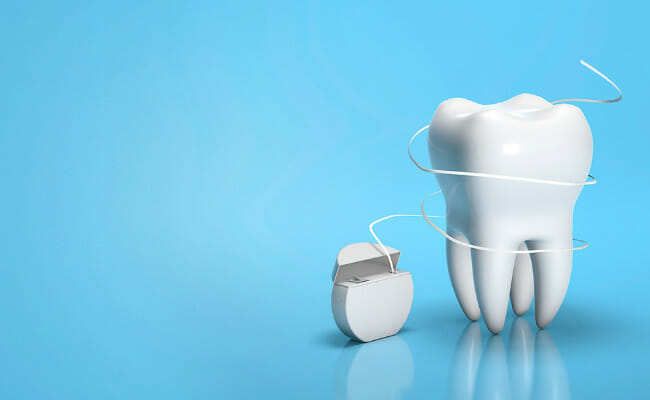
Photo Credit: www.cosmeticdentistinbrisbane.com.au
We have mentioned that there are now numerous types of floss available. Let us discuss them individually to find out which works best for you.
Unwaxed floss is one of the most common types, consisting of multiple nylon strands. They are free from chemicals because they do not have artificial flavoring.
They are an ideal choice for small gaps because they are thinner than other types of string floss. However, unwaxed floss is more likely to break.
Waxed floss also consists of interwoven nylon strings, but they have a wax layer. It strengthens the threads and lets them glide smoother between teeth than unwaxed floss.
The additional wax layer also thickens the threads, making them harder to fit into small gaps. Also, you may find waxed floss harder to grip, especially if you have muscle problems.
Dental tape looks like regular adhesive tape. It is broader and flatter than other types of string floss and has waxed and unwaxed versions. Dental tape suits people who have large gaps between their teeth. Otherwise, you may struggle to use it.
Polytetrafluoroethylene floss consists of PTFE, the material that makes up Gore-Tex fabric. Rest assured that this string floss will not shred as you use it.
PTFE floss can easily slide into the gaps of crowded teeth. Unfortunately, its production requires cancer-causing perfluorooctanoic acid. Dentists do not recommend extended use of this floss as it may compromise your immune system.
Super floss works for people with braces, bridges, and wide teeth gaps. It has three parts: regular floss, spongy floss, and a stiff end threader.
The latter allows a user to maneuver the floss under dental fixtures. However, super floss is not a good option for people with small tooth gaps. You may find it challenging to fit the thread through them.
The proper way to floss
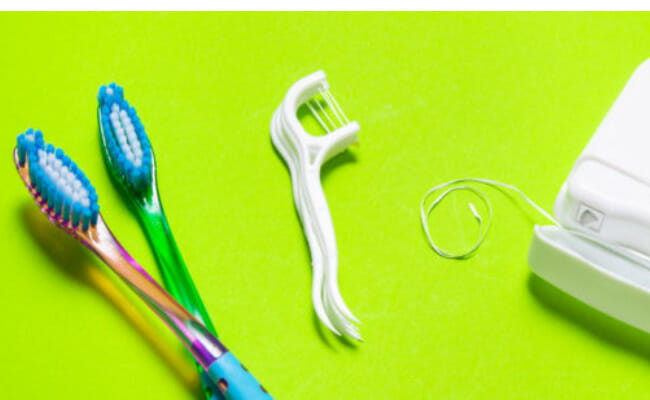
Photo Credit: northsidedental.com
Any type of floss will not be effective if you use the wrong technique. Let us discuss the proper steps for flossing teeth to see if you are doing it correctly.
Start by snapping off roughly 18 to 24 inches of floss. Next, wind most of the string around your middle fingers to hold it properly. Also, leave approximately one to two inches of floss for your teeth.
Hold the floss with your thumbs and index fingers. Then, place the thread between two teeth and gently glide it up and down. Make sure it rubs against both sides of each tooth.
Avoid scraping your gums to prevent bleeding or bruising. Curve the floss at the base of the tooth as it reaches your gums to form a C shape. It allows the floss to enter the space between your tooth and your gums.
Repeat the steps as you move from gap to gap. Moreover, use a new, clean segment of floss to ensure an optimal clean.
How to make water flossing more effective
Both types of flossing cannot clean teeth properly unless you follow proper oral hygiene practices. The most important one is brushing your teeth at least twice a day.
Make sure that you scrub your teeth thoroughly and gently to remove plaque. Also, brush your tongue to prevent bad breath and other oral health problems.
Use fluoride toothpaste to eliminate germs that cause tooth decay. Some people worry about its other impacts on health, but it places a protective barrier on your teeth. As a result, it remains a staple of oral health.
Avoid smoking cigarettes and other tobacco products to avoid gum disease and cancer. Also, you should stop vaping to maintain healthy teeth because it causes tooth decay and cavities.
Eat fewer sugary and acidic foods because they can erode the enamel that protects your teeth. Instead, try replacing them with crunchy fruits and vegetables. They give your jaws exercise and help you lose weight.
Conclusion
Water flossing could be a great alternative to traditional flossing for specific reasons. For example, they are a better choice if you have muscle problems like arthritis.
A water flosser and string floss cannot help if you do not brush your teeth regularly. More importantly, you should visit your dentist every six months.
Your sessions will allow the physician to detect potential health problems. Moreover, the expert may recommend string floss and water flossers, depending on your current condition.
Frequently asked questions
Is a water flosser a good idea?
A water flosser could reduce more plaque than string floss. Also, it could be easier to use for some people. However, you should use the best water flosser for maximum results.
How often should you use a water flosser?
The American Dental Association recommends flossing at least once a day. Also, you should follow your dentist’s recommendations and the product’s instructions.
Do water flossers whiten teeth?
Water flossers could help whiten your teeth by cleaning them thoroughly. However, they are not effective unless you brush your teeth regularly.


